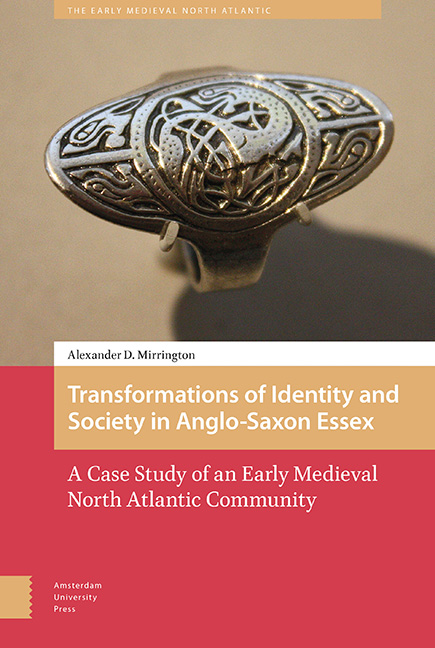 Transformations of Identity and Society in Anglo-Saxon Essex
Transformations of Identity and Society in Anglo-Saxon Essex 5 - Summary and conclusions
Published online by Cambridge University Press: 21 November 2020
Summary
This book has presented the results of a comprehensive survey of Anglo- Saxon Essex. The previous chapters detailed the archaeological evidence from the earliest appearance of material culture associated with the Anglo- Saxons in the fifth century to the end of Anglo-Saxon rule in England at the Norman Conquest. The study has made central use of diachronic and spatial distribution analyses incorporating both stray and stratified finds. Particular precedence has been given to pottery, coinage, and dress items, prior to making inference from the whole corpus of archaeological material. Conclusions have been drawn concerning the nature of group identities and their expression in Essex, as well as the economy of the region and in particular how this operated in relation to long-distance networks and in a town-hinterland context.
In this final chapter, the results of the analysis presented over three chapters will be drawn together to give a thematic and overall picture of Anglo-Saxon Essex over the full course of the early medieval period and furthermore, how these findings relate to prior scholarship.
The results from dress-accessory data
Chapter 2 (c.400-c.650)
The period between c.400 and c.650 was witness to huge transformations in dress in Essex. In the early fifth century, the archaeological evidence shows a mixing of Romano-British and Germanic customs, perhaps as early migrants from north-western Europe were settling into the sub-Roman British landscape. This was though a period of socio-political flux, with a documented history marked by violence. It may thus be appropriate to interpret the mixed fashions as a reflection of uncertain allegiances and/ or simply a mixing of cultural traditions during a period of flux.
From c.450, however, the dress styles confidently proclaim cultural affiliations with various related cultures in continental north-western Europe. The most notable similarities are with the areas of Lower Saxony and Schleswig-Holstein. There are also artefacts, which show that this cross-Channel network also extended to Merovingian Francia. At this time regional dress customs emerge in England, which have been taken as expressions of specific group identities (e.g. ‘Angles’ in ‘East Anglia’) (e.g. Leeds 1945; Geake 1992; Parker Pearson et al. 1993; Yorke 2006).
- Type
- Chapter
- Information
- Transformations of Identity and Society in Anglo-Saxon EssexA Case Study of an Early Medieval North Atlantic Community, pp. 215 - 230Publisher: Amsterdam University PressPrint publication year: 2019
